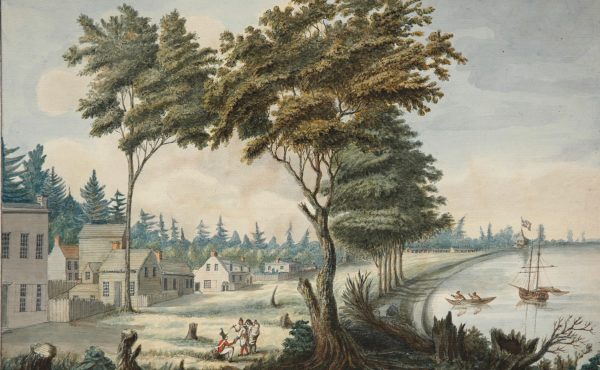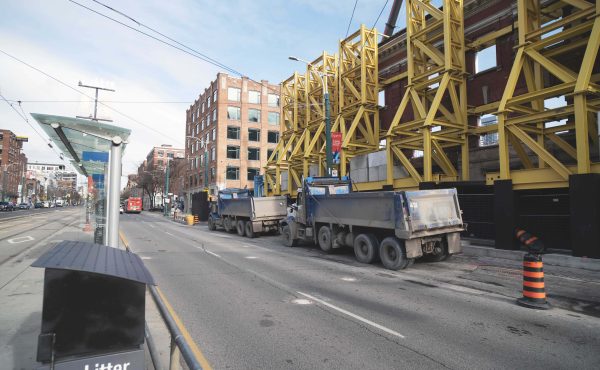
In a meeting this afternoon, Metrolinx board members have unanimously voted in favour of the Regional Transportation Plan (RTP).
Metrolinx was created to solve the transportation problems facing the Greater Toronto/Hamilton Area and consolidate the patchwork of transportation infrastructure between the cities and municipalities. Some of the strategies outlined in the plan are to build a comprehensive Regional Rail Rapid Transit Network, enhance and expand active transportation, and improve the efficiency of the road and highway networks, amongst other things.
Just before 2:30 pm this afternoon, the board members voted on the RTP and passed the plan without any significant amendments.The board includes Toronto Mayor David Miller, City of Toronto Councillors Adam Giambrone and Norm Kelly, GO Transit chair Peter Smith, Regional Chairs Bill Fisch (York), Gary Carr (Halton), Roger Anderson (Durham), Hamilton’s Mayor Fred Eisenberger, Mississauga Mayor Hazel McCallion, former Chief Planner for the City of Toronto Paul Bedford, and Metrolinx Chair Rob MacIsaac.
Earlier in the board meeting, Weston Community Coalition Chair and federal NDP candidate Mike Sullivan made a deposition about the proposed airport rail link (also known as Blue 22) that would run through his riding of York-South Weston. “The people of Weston want you to know that we welcome real public transit,” Sullivan told the board. “We fear something else is afoot.”
Sullivan made a number of recommendations, including: utilizing electric — not diesel — engines; building stops in Weston; amending the part of the proposal that suggests severing a handful key Weston roads to make way for the rail line; setting fares on the route that are comparable to other public transit options; and building a bike path in the rail corridor as part of the project.
Since the airport rail link is not specifically a Metrolinx project, the board agreed to forward Sullivan’s recommendations to the province for consideration. But Mississauga Mayor (and board member) Hazel McCallion moved that she and her colleagues petition the McGuinty government to be involved as consultants in the rail link process. “It’s transit, whether we like it or not,” McCallion said. “I think the presentation made this morning should be thoroughly analyzed.”You can view the draft Metrolinx Regional Transportation Plan here [pdf]
photo by striatic




9 comments
I find it interesting that Waterloo Region’s Rapid Transit started way back in July of 2005, but Transit City started in March of 2007 and is much further along. Even Hamilton’s transit plans are further along than Waterloo’s.
Too bad the Metroplinx plans don’t currently reach into Waterloo Region, then its rapid transit plans would be much further along.
delete the above comment – I didn’t see the error had been corrected since it appeared in the RSS feed
Although there are flaws which every proposal invariably will have, on the whole I’m supportive of the Metrolinx plan. Specifically, I’m encouraged about the use of electric express rail to knit together the communities on the Lakeshore and Georgetown GO lines. I’ve used express regional rail in just about every city I’ve ever been to that had one and they are at the top of the heap in terms of service, speed and efficiency over both long and medium distances. Since we’re a pretty spread out region, but with dense employment and housing nodes, this sort of service would be ideally suited for getting people around.
A direct link to downtown from the airport is something great, but severing streets and ancient diesel locomotives make for a trashy proposal. The demands of the transit advocates based out of Weston and concerned community members are definitely reasonable.
WK Lis…. the Transit City projects were able to take advantage of the new Class EA process for transit (beginning in 2007) which gets rid of a lot of steps in the process and reduces some of the mandatory time requirements. Waterloo had to do an individual EA, with much more thorough analysis (e.g. had to consider technologies like aerobus and monorail and their pros and cons as part of evaluating alternatives).
Waterloo’s plans are much farther than Hamilton’s.. Hamilton has not started the EA as far as I know and if they have it’s quite early (but they will be able to use the new EA process). Waterloo is almost ready to choose the final route.
Good for Hazel for sticking up for Mike Sullivan’s recommendations on the airport link.
In the early discussions at Metrolinx, they did include places far from the GTAH like Waterloo, but part way through the process the scope was cut back to make recommendations about only the GTAH proper.
The potential for extension beyond the borders is still hinted at, but the final plan confines itself to services within the area Metrolinx was mandated to study.
One of the repercussions of the Front St. Extension would have been to have added more challenge to doing effective transit on this Weston corridor. Now that we seem more open, maybe, to avoid most of the Front St. road follies, one of the transit options is to put a LRT onto this Weston rail corridor but bring it into the core along Front St. where there’s extra width, a lot of destinations, and links to other transit routes and not just at Union Stn.
I’m worried that as the official window is opening on Front St. thinking eg. transit, the Big Moves contains a big mistake eg. the WWLRT, at c. $700M, and if one reads the 1993 EA, it basically says what’s being done with this project now isn’t good, and they suggested a good study be done of the more direct route into the core perhaps along Front St.
I think we need to squeeze the millions a bit better.
Anybody old enough to remember MTARTS? What is it about Toronto that we keep producing transit plans but never manage to build anything meaningful? And while I rant can anybody tell me how the ceiling replacement on the St Clair station concourse level managed to take years to complete (if it is in fact complete)?